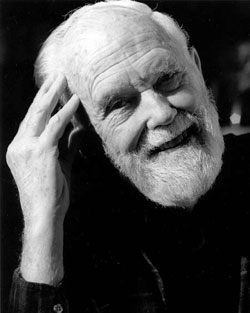
Richard H. Goodwin (1910-2007), a pioneering national leader in the field of land preservation and an accomplished botanist.
In 1944, Professor Goodwin accepted a position as professor of botany at Connecticut College and became director of the College's Arboretum. His interest in conservation flourished, as he recognized land ownership was the most effective method of preservation. During his 30-year tenure, the Arboretum expanded from 90 acres to more the 40. Today the Arboretum is an important natural laboratory for Connecticut College students. This protected space also is an invaluable buffer that preserves the College's beautiful campus.
Professor Goodwin was active in land conservation beyond the borders of the campus, from California to his own backyard in East Haddam, CT. He was an early member of the Nature Conservancy and served twice as its president. In 1964, when elected to his second term, he turned the Arboretum over to fellow Connecticut College botanist William Niering, ended his research work and focused his efforts on conservation. He is credited with transforming the Nature Conservancy from a regional group with 2,000 members to one of the nation's top conservation organizations.
Professor Goodwin remained an energetic and inspiring teacher, and in 1968 he was a leader of the effort to establish a major in human ecology (now environmental studies) at Connecticut College. The program, linking the study of science and public policy, was one of the first of its type nationally at an undergraduate institution. The College's Goodwin-Niering Center for Conservation Biology and Environmental Studies was named in honor of these two influential professors.